Saving hatchlings takes centre stage in Qld coast developments
Turtle ‘sensitive’ areas are changing the face of Qld coastal developments, with applicants in hotspots like Bundaberg and Hervey Bay forced to show why their lights won’t interfere with turtle direction.
Bundaberg
Don't miss out on the headlines from Bundaberg. Followed categories will be added to My News.
The proposed Bargara Jewel building fast became the Bundaberg region’s most controversial development in recent years.
While town planning guidelines suggested a maximum of five storeys along the Bargara coastline, the ambitious high-rise was slated as a nine-storey unit complex, complete with a rooftop bar.
But controversy ensued amid concerns for the region’s turtles, with fears the excess light it generated could lead baby loggerheads astray because they follow the moon to get back out to sea. Any confusion can lead them in the wrong direction and put them in danger from cars and predators.
Developer Sheng Wei pledged specialist lighting for the project, which was ultimately called in by the State Government in a rarely used power that allows the government to step in on local decisions that could impact the state.
In 2018, Mr Wei announced he was holding fast and would not budge on the plan for nine storeys.
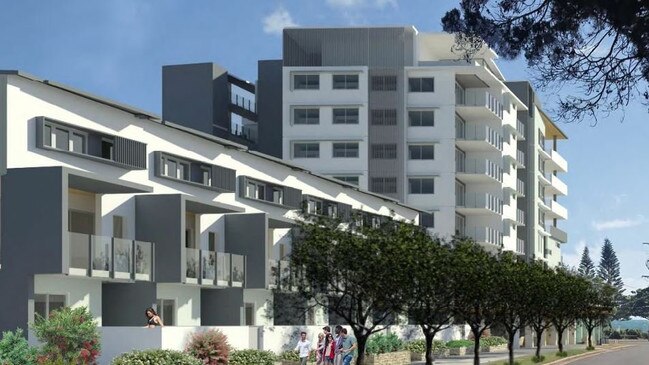
In 2019, the State Government approved the Bargara Jewel under the conditions that it be no more than six storeys, that there be no commercial businesses at the ground level and that the rooftop bar would not go ahead.
The Bundaberg NewsMail understands there has since been no update from the developer to the State Government on when construction will begin.
But while Mr Wei holds tight, a whole new world of turtle conservation has entered the mainstream.
Developments are no longer being seen simply in terms of what they bring economically, but in terms of what the cost of that sugar hit is in a state with a daily payday of $54.2 million in tourist dollars in 2020.
Last year, when the Fraser Coast Chronicle reported on the development of new town planning guidelines, turtle safety was listed among several environmental considerations, with a focus on state-implemented turtle-sensitive zones where light pollution would be minimised.
A voluntary code for any town or city along Queensland’s coastline is available to those local governments.
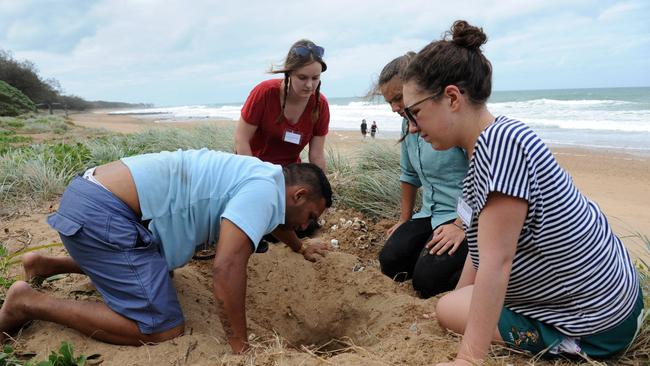
The code, which can be viewed here, aims to cut the glow and preserve the turtles, giving them consideration in an increasingly developed Queensland coastline.
Some of the code‘s stipulations include all outdoor lighting avoiding illumination of beaches, minimising glare and sky glow, ensuring developments provide landscape buffers to protect vegetation and screening the development to not be visible from the beach or ocean.
And while developers and councils are being asked to consider the turtles, the state’s overall investment in the cultural, financial and environmental value of the marine creatures is tangible.
In June 2021, environment minister Meaghan Scanlon visited the region to announce $750,000 for 400 solar panels at Mon Repos, part of a $22 million investment in the Mon Repos Turtle Centre.
A Department of Environment and Science spokesperson said there was no doubt that turtles were a big focus of the State Government.
“Marine turtles are a vital part of our marine environment,” they said.
“They contribute to our economy and are of enduring cultural, social and spiritual significance to coastal Aboriginal and Torres Strait Islander peoples and other Queensland communities.
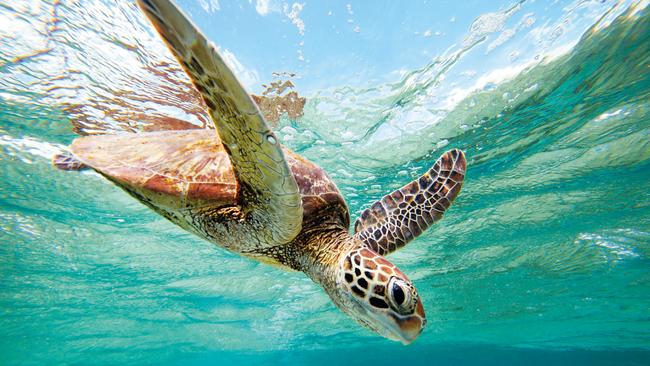
“All six species of marine turtles – the flatback, leatherback, olive ridley, loggerhead, green and hawksbill turtles – are listed as threatened. Key threats include climate change, marine debris, nest predation, fisheries bycatch and light pollution.”
Queensland has the longest history of marine turtle conservation and management in Australia which stretches back to 1932.
In 1968, Queensland became the first jurisdiction in the world to protect all marine turtle species within its borders.
“More than 50 years of continuous research and monitoring provides the basis for this world class conservation program,” the spokesperson said.
“The Queensland Government is taking action in a number of areas to support and protect our marine turtles.”
The Queensland Marine Turtle Conservation Strategy 2021-2031 is the framework to guide Queensland Government investment in marine turtle research, conservation, and management.
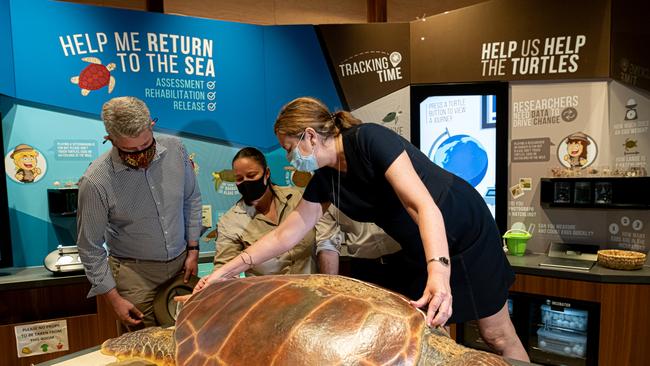
It identifies actions to ensure the long-term viability of the marine turtle species that nest in Queensland and the turtles that forage and migrate in adjacent Australian waters.
“The framework builds on the important work already being carried out by the Queensland and Commonwealth governments, First Nations people, natural resource management groups, non-government organisations, research institutions and community-based groups to research, monitor and protect marine turtles,” the spokesperson said.
“Marine parks provide protection for our turtles through a range of management zones that prohibit trawling and netting and reduce the risk of boat strike and disturbance.
“Boaties and fishers are reminded through dedicated campaigns to keep a good lookout when on the water and ‘go slow for those below’ to help protect turtles and other marine mammals, such as dugongs, from boat strike.”
The spokesperson said the protection of 1.2 million hectares of fisheries habitat in 72 declared Fish Habitat Areas protected vital feeding habitat for turtles.
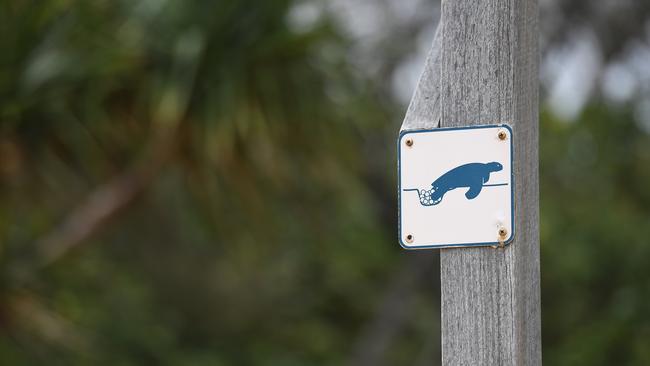
“The Queensland Government encourages communities within 5km of turtle nesting beaches to ‘cut the glow to help turtles go’ during marine turtle breeding season from mid-October to April,” they said.
“The majority of both nesting and hatchling turtle activity occurs at night. This makes turtles vulnerable to disturbance and disorientation from artificial lights near turtle nesting beaches.
“Expanding the light-weight plastic bags ban to include other various single-use plastics also supports turtle conservation, as these items are a high risk of ending up in our oceans.”
The spokesman said the Bundaberg region was particularly significant when it came to protecting turtles.
“The Mon Repos Conservation Park at Bargara supports the largest concentration of marine nesting turtles on the eastern Australian mainland and the Mon Repos Turtle Centre is dedicated to marine turtle protection, education and a world-class tourism experience,” they said.
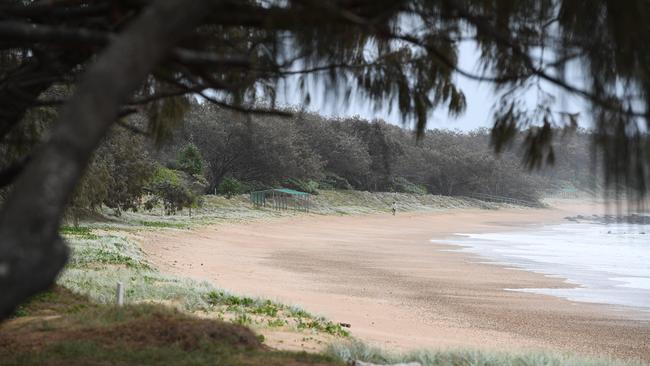
“Last year, the Department of Environment and Science purchased 42 hectares of land directly adjacent to Mon Repos Conservation Park through the Queensland Protected Area Strategy 2020-2030. This will allow the restoration of important wetland habitats, improving groundwater flows critical to the health of the turtle rookery, and help buffer artificial light.”
Then there was the Commonwealth and Queensland Government’s jointly funded Nest to Ocean Turtle Protection Program to help reduce the threat of predation on marine turtle nests.
“Since commencement of the program in 2014, more than 20,000 turtle nests have been monitored by Nest to Ocean grant recipients, and the program has consistently achieved greater than 95 per cent nest survival as a result of the predator control activities and direct nest protection,” the spokesperson said.

“In total, it is estimated that approximately 1.3 million hatchlings have been protected since the inception of the program.”
The government is further investing in the Great Barrier Reef region.
“The purchase of a former tourism lease on Wild Duck Island under the Queensland Government’s $6 million Great Barrier Reef Island Arks initiative will result in permanent protection of the island which supports the largest rookery of flatback turtles,” the spokesperson said.
“Raine Island National Park Recovery Project aims to restore the island’s critical habitat that supports the world’s largest green turtle nesting population, important seabird rookeries and the significant cultural place for Wuthathi and Meriam Nation Traditional Owners.
“The Queensland Government Marine Turtle Breeding and Migration Atlas uses data collected over 50 years to display the spatial and temporal variability in the distribution and abundance of marine turtle nesting, linked to migration data connecting the nesting populations to their widely dispersed foraging areas.”




